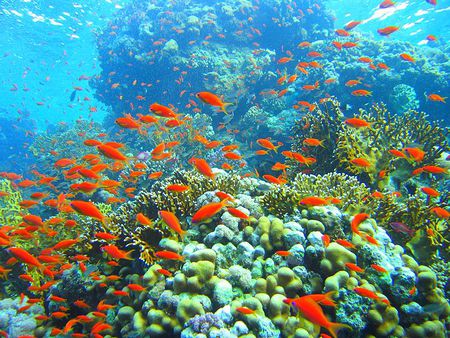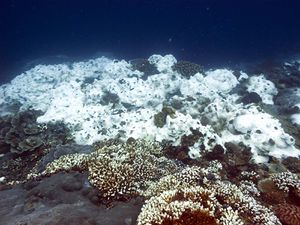Coral microbial ecology
Introduction
Corals are invertebrate marine animals belonging to the phyla Cnidaria and class Anthozoa. They thrive in salty ocean water. Although some corals have been found as deep as 91 m (300 ft), most live optimally at shallower depths of 70 m (230 ft) or less. Corals are either soft or hard, but reefs form only with the presence of hard coral. Soft coral doesn't have the capability to make reefs, but still may be present. Hard corals have calcium carbonate skeleton. The microbial community found in coral reefs are co-habitating and non-pathogenic consisting of bacteria, archaea, and fungi. They live in the mucus, tissue, and skeleton of coral. These microbes effect the ecosystem's food webs, life cycles, chemical cycles, nutrient cycles, and reugaltion of pathogenic microbes.

Zooxanthellae Symbiosis
Zooxanthellae are single-cell photosynthetic algae that live in the coral's gastrodermis, the tissue covering the gastrovascular cavity. Coral and zooanthellae have a positive symbiotic relationship. Most of the coral's food intake is reliant on the products of the zooxanthellae's photosynthesis. In return for the food source, these microbes get a place to live. The pigment of coral is also a product of healthy zooxanthellae.
Disease
Include some current research, with at least one image.
Bleaching
Include some current research, with a second image.

Current Research
Conclusion
Overall text length should be at least 1,000 words (before counting references), with at least 2 images. Include at least 5 references under Reference section.
References
Edited by Emily Stegner, student of Joan Slonczewski for BIOL 116 Information in Living Systems, 2013, Kenyon College.
